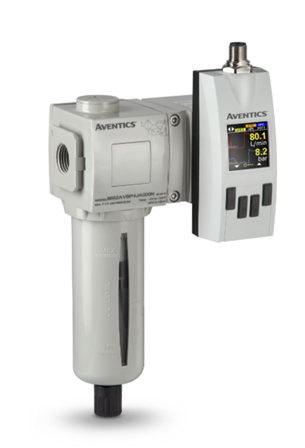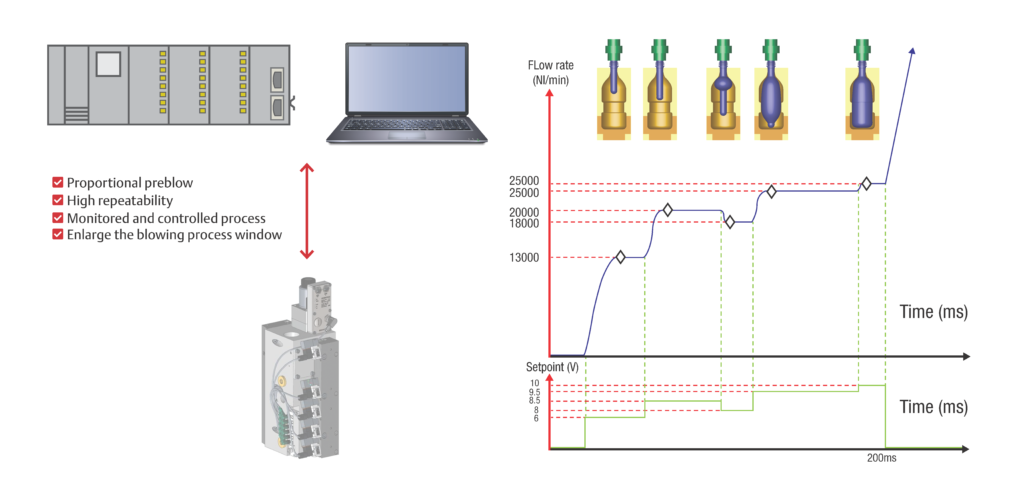Saving Energy With Pneumatic Valves and Smart Sensors in Packaging Lines
Written by the specialists at Emerson.
It’s estimated that more than a third of greenhouse gas emissions are produced by food systems, with packaging processes responsible for around 5.4% of that. To reduce — and ultimately eliminate — emissions, consumer packaged goods (CPGs) companies are setting decarbonization targets. As CPGs take action and move toward carbon neutrality, they are seeking reliable ways to reduce energy use across their facilities.
One way that many companies are reliably reducing energy consumption is through the integration of new, energy-efficient pneumatic valve technologies. Pneumatic control valves are critical to a broad range of packaging systems for their cost-effective, reliable performance. Their prevalence and the variety of new, smart capabilities pneumatic air valve manufacturers have developed present great opportunity for CPGs to save energy and gain greater value from their pneumatic systems.
Optimizing energy use using flow sensors
In general, CPGs have many machines, usually from different manufacturers, that share a main compressed air supply line. The compressed air that packaging facilities use to operate this equipment and power processes in their packaging lines requires a considerable amount of energy to produce. Unfortunately, not all of it is efficiently used; some compressed air may go to waste through leaks. Leaks can be hard to detect and may often go unnoticed until they result in huge energy losses and expensive downtime.
Pneumatic system monitoring is one way to detect leaks and control energy use. Most machines don’t have monitoring technology built in. However, they can be retrofit with smart pneumatic sensors. Flow sensors, like Emerson’s AVENTICSTM Series AF2 sensor, make it possible to identify and address leaks early — and even before they happen — to optimize energy use.
By measuring compressed air consumption in real time, flow sensors can offer a clear picture of pneumatic system performance and energy consumption. Using this information, companies can better understand their energy use and take meaningful action to effectively control it.
Much more than a flow meter, the AF2 measures eight different process parameters: pressure, temperature, mass flow rate, volumetric flow rate, flow velocity, total mass, total volume and energy. Its large, configurable OLED display clearly presents operating data, making it easy for operators to read. Operators can also configure various visualizations, including flow charts, for measurements as well as process curves and cumulative values. The sensor stores up to seven days’ memory, so operators can access basic machine history, too.

The AF2 provides data at the machine level and can signal which machine in the supply line may have a leak. Using data, operators can gain insight into a machine’s airflow and correlate what they learn back to machine cycles. By better understanding the cycle of the machine and its air profile, an operator can compare real-time data to baseline data, such as a standard airflow profile, or data from the best machine on the line. If there is a deviation from the baseline data, operators can identify the issue and quickly take action, such as replacing a component that is causing leakage.
Comparing cycle profile and air consumption provides a lot of valuable information about machine health, possible leaks and energy consumption that operators wouldn’t otherwise have access to. It can help operators confidently make decisions and take action that better controls packaging line energy use.
In fact, the data-capture capability and systematic approach of the AF2 enables operators to monitor air consumption in pneumatic systems according to DIN ISO 50001 for energy management. This ISO standard was created to help organizations establish, implement, maintain and improve their energy management systems.

Using just the AF2, CPGs can keep collected data within their own IT network or they can extract data to the cloud via gateways. When paired with a gateway and specially developed software, operators can access advanced dashboards, store historical data, create parameter thresholds that trigger alerts, complete leakage analysis, correlate data with other machine sensors, complete site accounting and much more.
The simplicity of the AF2 and its breadth of information provide CPGs a foundational point of entry to their digital transformation journeys and a valuable way to reliably save energy.
The data from sensors can be presented to operators via insights and visualization on their personal smart devices, making it easier to access, interpret and use for decision-making. (image courtesy of Emerson)
Reducing waste using proportional valves
It’s estimated that nearly 1 million plastic bottles are sold every minute. Most of these are polyethylene terephthalate (PET) bottles. To meet global demand, about 3,500 stretch blow molding (SBM) systems are manufactured and deployed every year.
The latest production systems incorporate the SBM process with the bottling process in a continual production flow. Combination systems can reduce both a line’s physical footprint as well as its carbon footprint by removing the need to ship bottles from production to filling. The pneumatic valve technologies that power key SBM functions can save a significant amount of energy, too.
Three pneumatic technologies that can make the biggest difference in a production system’s energy consumption are proportional control valves, air preparation systems and blowing blocks. Pneumatic air preparation systems improve efficiency and provide greater control of the low- and high-pressure air that preform actuators and stretch blow bottle expansion steps use to form bottles. The pre-blow, blow, recycling and exhaust functions of compact, high-performance blowing blocks better control bottle volume growth. Advanced proportional valves, however, revolutionize pre-blow expansion and significantly improve the energy efficiency of this step.
Emerson offers a proportional control valve solution specially engineered to replace the on/off high-pressure flow in the pre-blow expansion step in PET production. The innovative solution combines a specially designed proportional valve, control electronics and software. The proportional valve fine-tunes the expansion of each bottle within the mold by modulating flow rather than providing a uniform flow rate throughout the blow process the way that on/off high-pressure flow does. The system can store blowing sequence set points in the valve or respond to control directions from the SBM programmable logic controller (PLC) for deliberate bottle growth, making it possible for end users to precisely refine how heated bottles expand within the mold.

The ability to fine-tune bottle wall and shape formation makes it possible to create thinner, lighter-weight bottles, which can reduce the amount of material used for each bottle. It also saves energy by reducing the blow air pressure required for bottle formation without sacrificing quality as well as the heating temperature in the pre-blow oven.
In addition to precisely modulating bottle growth, this advanced proportional valve technology has several additional capabilities that improve the energy efficiency and sustainability of the PET bottle blowing process. The system can also provide feedback results that indicate the quality of each blow. This critical data helps bottle manufacturers perfect their forming process, which can improve bottle quality and consistency and reduce scrap. It also provides condition monitoring data that enables preventive maintenance, improving efficiency and reducing downtime.
Aside from the new proportional valve technology’s energy-saving benefits, the system allows bottle manufacturers to achieve a higher throughput when producing complex bottle shapes that can be more attractive for consumers. And, since the process can be easily updated via the software/PLC formula, each blowing station on the machine can be refined for greater improvement without stopping production.
Better control, greater savings
New, smart pneumatic valve technologies provide CPGs ways to reliably reduce energy use. The integration of smart sensors in packaging lines and proportional valves in PET bottle production gives CPGs the ability to control processes and refine their outcomes. Reliably decarbonizing packaging lines will not happen without intention — it will take the high level of control, precision and deliberation these technologies are designed to provide.
Contact the experts at JHFOSTER to learn how you can start saving energy in your facility.